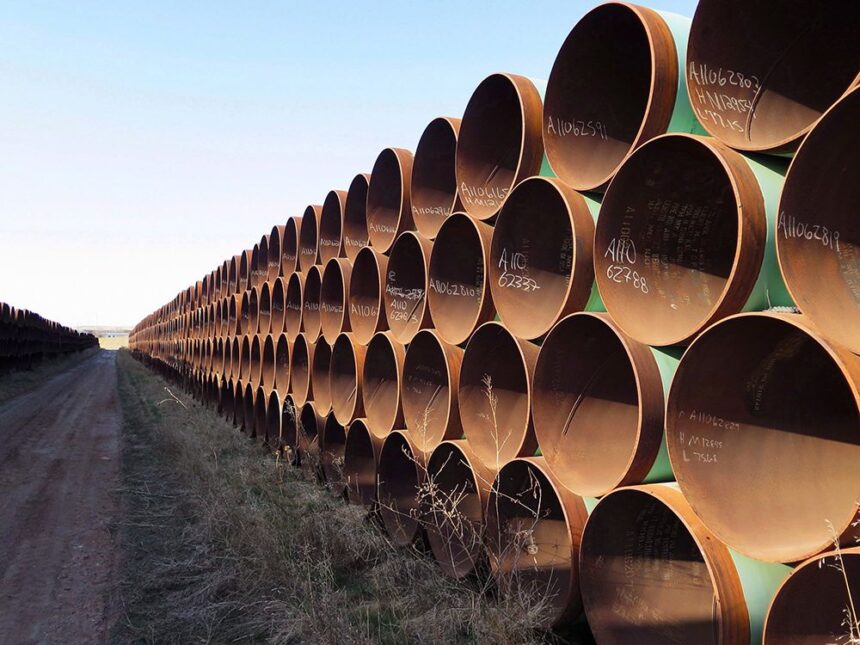The small logging town of Kitimat along British Columbia’s rugged northern coast sits quietly at the center of what might be Canada’s most consequential energy pivot in decades. Here, where towering cedars meet tidal waters, the $34 billion Pathways Alliance pipeline project promises to redirect Canadian oil exports away from U.S. markets and toward Asian buyers—particularly China.
“We’ve been hearing about pipelines for twenty years,” says Marie Fontaine, a local resident whose husband works in Kitimat’s industrial sector. “But this one feels different—there’s real momentum behind it, and people here understand what’s at stake.”
What makes this project particularly noteworthy is one of its prominent backers: Mark Carney, former Bank of Canada and Bank of England governor. Carney, who now serves as UN Special Envoy on Climate Action and Finance, has positioned the project as essential for Canada’s economic future while aligning with climate goals.
On a drizzly morning last week, I walked Kitimat’s shoreline with environmental consultant David Chen, who gestured toward the proposed terminal site. “The engineering challenges are significant but manageable,” Chen explained. “What’s more complex is balancing the economic opportunity against environmental concerns in a region where both jobs and pristine ecosystems matter deeply to residents.”
The pipeline would carry approximately 400,000 barrels of oil per day from Alberta’s oil sands to Kitimat’s deep-water port. From there, tankers would transport Canadian crude primarily to Chinese refineries, significantly reducing Canada’s dependency on American buyers who currently purchase over 95% of Canadian oil exports.
This shift comes as tensions between Ottawa and Washington have intensified around energy policy. The cancellation of the Keystone XL pipeline during President Biden’s first days in office sent shockwaves through Canada’s oil sector. Now, with former President Trump promising even more unpredictable energy policies should he return to office, Canadian producers see Asian markets as a crucial hedge against U.S. political volatility.
“Canada can’t afford to have its primary resource export subject to the whims of American politics,” says Olivia Santiago, energy economist at the University of Calgary. “Diversification isn’t just good business—it’s essential for our national economic security.”
The project’s environmental credentials remain contentious. Pathways Alliance claims the pipeline will transport increasingly lower-carbon Canadian oil as producers implement carbon capture technologies. According to Natural Resources Canada data, oil sands emissions intensity has dropped by approximately 20% since 2009, though total emissions continue to rise with increased production.
For Indigenous communities along the proposed route, the project represents both opportunity and concern. The Haisla Nation near Kitimat has conditionally supported the project, while other Nations remain opposed or undecided.
“We’ve been in deep consultation for months,” says Chief Councillor Crystal Smith of the Haisla Nation. “Our priority is ensuring environmental protections while creating sustainable economic opportunities for our youth. We’re not interested in short-term gains at the expense of our traditional territories.”
When I visited the Haisla Nation’s cultural center overlooking the Douglas Channel, community members shared how previous industrial developments brought mixed results—jobs and revenue but also environmental concerns and cultural disruptions.
The geopolitical implications extend beyond North America. China, which imported approximately 10.5 million barrels per day in 2022 according to the International Energy Agency, has been actively diversifying its energy suppliers amid growing tensions with traditional partners. Canadian oil represents an attractive option for Beijing—sourced from a politically stable democracy with increasing production capacity.
“Chinese refineries are technically well-suited to process the heavy crude that Canada produces,” explains Dr. Ming Zhao, international energy researcher at Simon Fraser University. “For China, Canadian oil offers supply security that Middle Eastern or Russian sources increasingly cannot.”
For Carney, who may harbor political ambitions within Canada’s Liberal Party, supporting the project represents a delicate balancing act. He frames the pipeline as part of a responsible transition—providing needed economic activity while the world gradually reduces fossil fuel dependence.
“If we’re realistic about global energy demand, we need solutions that work for today’s economy while building tomorrow’s,” Carney stated during a recent economic forum in Vancouver. “Canadian resources developed responsibly can and should be part of that equation.”
Environmental organizations remain skeptical. “You cannot build new fossil fuel infrastructure and claim climate leadership,” argues Sierra Club Canada’s executive director Jens Wieting. “The math simply doesn’t work if we’re serious about meeting our Paris Agreement commitments.”
Meanwhile, in Kitimat, residents like Marie Fontaine recognize the tensions but largely support the development. “Our community needs these jobs,” she says. “And if the oil is going to be produced anyway, shouldn’t it be done with Canadian environmental standards and benefit Canadian communities?”
As federal regulators review the proposal, the pipeline’s fate remains uncertain. What is clear is that this project represents more than infrastructure—it’s a strategic pivot in how Canada positions itself in global energy markets while navigating domestic climate politics.
Standing at Kitimat’s harbor watching cargo ships glide through the protected waters, I’m struck by how this remote coastal community embodies Canada’s energy contradictions. Here, amid ancient forests and industrial ambitions, Canadians are wrestling with defining their place in a world caught between immediate economic imperatives and long-term climate realities.
Whatever the outcome, the Pathways Alliance project signals that Canada’s energy future increasingly looks west across the Pacific rather than south across the 49th parallel—a redirection that could reshape North American energy relationships for decades to come.






